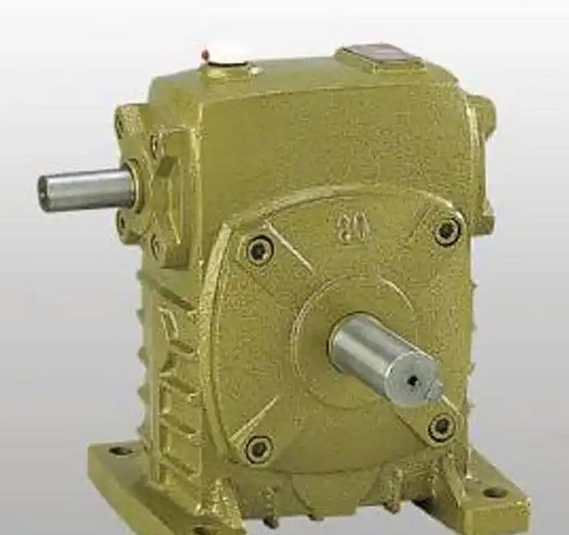What are the symptoms of insufficient lubrication in WPS32-50-B worm gear reducer
The following symptoms may occur if the lubrication of the WPS32-50-B worm gear reducer is insufficient:
Abnormal temperature:
Excessive oil temperature: During normal operation, the gearbox experiences a certain temperature rise, but insufficient lubrication can intensify component friction, causing the heat generated to be unable to be carried away by the lubricating oil in a timely manner, resulting in a rapid increase in oil temperature, which may exceed 80 ℃ or even higher.

Box heating: Due to the high internal oil temperature, heat is transferred to the box, causing a significant increase in temperature, which can feel hot when touched by hand.
Increased wear and tear:
Tooth surface wear: Due to insufficient lubrication, the tooth surfaces of the worm gear and worm gear come into direct contact and friction, causing gradual changes in tooth shape, decreased transmission accuracy, and increased noise.
Bearing wear: Bearings can also experience wear, fatigue peeling, and other phenomena due to insufficient lubrication, which can increase vibration and even cause jamming during the operation of the gearbox, affecting normal operation.
Shaft wear: Poor lubrication at the joint between the shaft and bearings or other components can cause wear, resulting in unstable transmission, and in severe cases, deformation or fracture.
Increased noise: Dry friction or poor lubrication between components can cause the gearbox to produce abnormal noise during operation, such as sharp sounds, impact sounds, etc., which are different from the smooth noise during normal operation.
Reduced transmission efficiency: Due to increased friction losses, the losses during energy transmission become greater, resulting in a decrease in the transmission efficiency of the gearbox, and the output torque may be insufficient to meet the load requirements.
Increased risk of oil leakage: Although insufficient lubrication itself may not directly cause oil leakage, long-term poor lubrication can lead to component wear and deformation, which may reduce the sealing performance of the box joint surface, shaft seal, and other parts, increasing the possibility of oil leakage.

